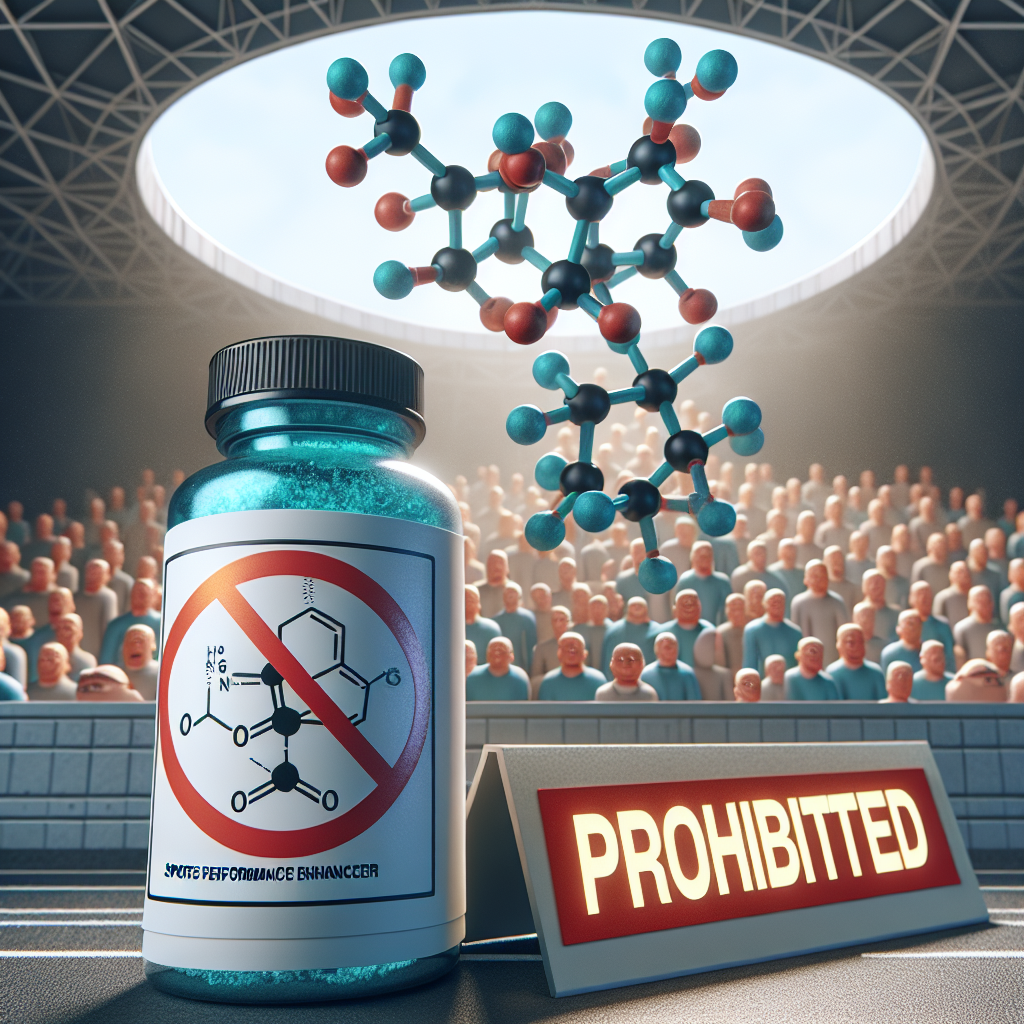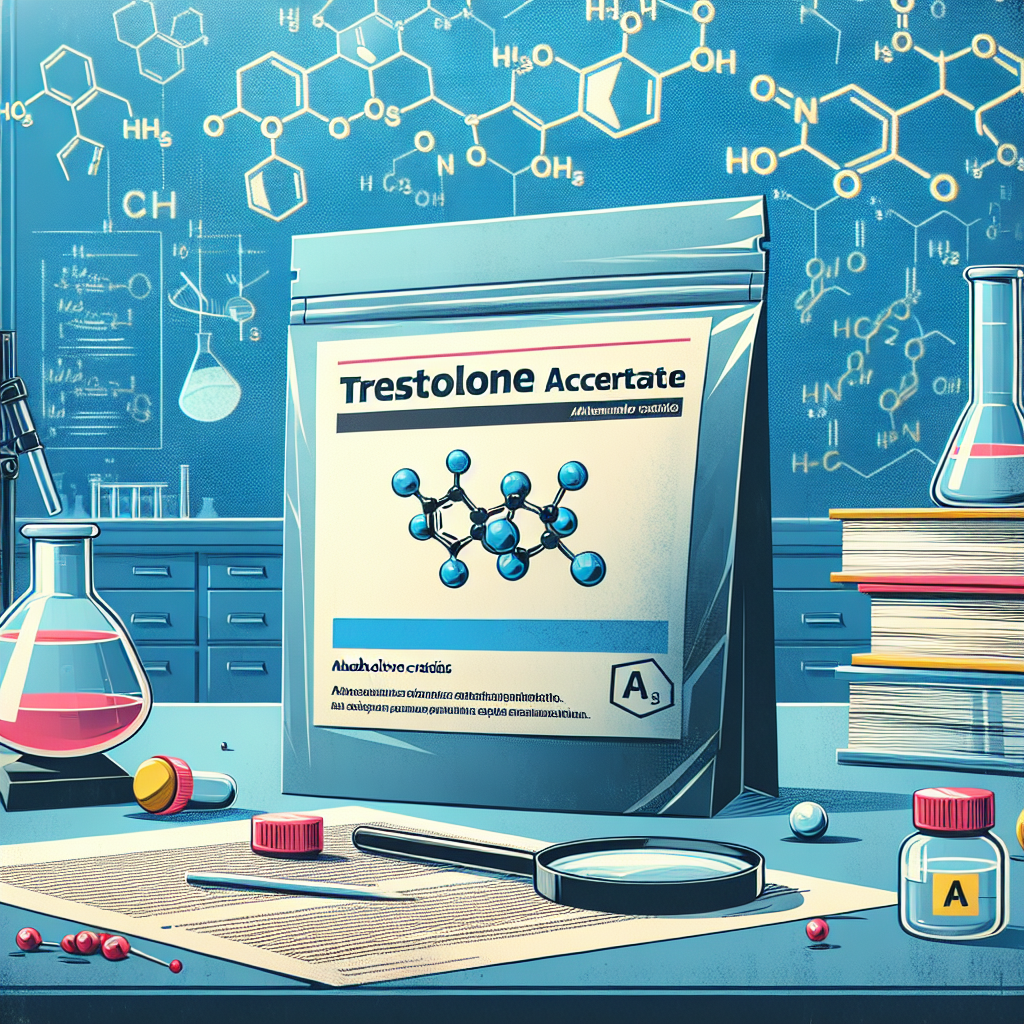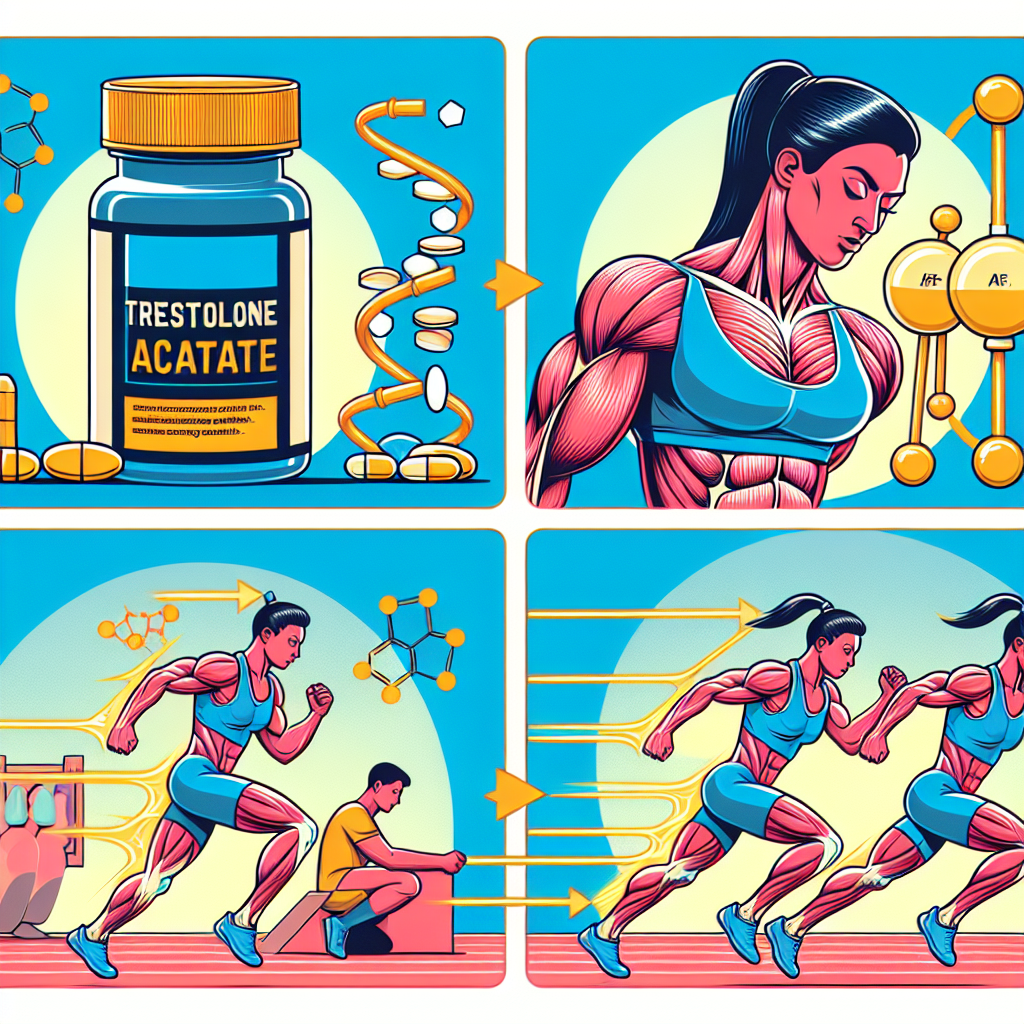-
Table of Contents
Methyltrenbolone: Doping in the Sports Arena
The use of performance-enhancing drugs in sports has been a controversial topic for decades. Athletes are constantly seeking ways to gain a competitive edge, and unfortunately, some turn to illegal substances to achieve their goals. One such substance that has gained attention in recent years is methyltrenbolone, a potent androgenic steroid with high anabolic activity. In this article, we will explore the use of methyltrenbolone in the sports arena, its pharmacokinetics and pharmacodynamics, and the potential risks associated with its use.
What is Methyltrenbolone?
Methyltrenbolone, also known as methyltrienolone or R1881, is a synthetic androgenic-anabolic steroid derived from nandrolone. It was first developed in the 1960s by Roussel-Uclaf, a French pharmaceutical company, for the treatment of breast cancer and osteoporosis. However, due to its high potency and potential for abuse, it was never approved for medical use and is only available on the black market.
Like other anabolic steroids, methyltrenbolone works by binding to androgen receptors in the body, promoting protein synthesis and increasing muscle mass and strength. It also has a high affinity for the progesterone receptor, which can lead to estrogenic side effects such as gynecomastia and water retention. This is why it is often used in combination with anti-estrogen drugs to mitigate these effects.
Use in Sports
Methyltrenbolone has gained popularity among athletes and bodybuilders due to its high anabolic activity and low androgenic effects. It is often used in cutting cycles to help athletes achieve a lean and defined physique. However, it is also used in bulking cycles to help athletes gain muscle mass and strength quickly.
One of the main reasons for its use in sports is its ability to increase red blood cell production, leading to improved oxygen delivery to muscles and increased endurance. This can be especially beneficial for endurance athletes such as cyclists and long-distance runners.
Additionally, methyltrenbolone has a short half-life of approximately 4-6 hours, making it difficult to detect in drug tests. This has made it a popular choice among athletes looking to avoid detection while still reaping the benefits of the drug.
Pharmacokinetics and Pharmacodynamics
The pharmacokinetics of methyltrenbolone have not been extensively studied in humans. However, animal studies have shown that it is rapidly absorbed and metabolized in the liver, with a half-life of approximately 4-6 hours. It is primarily excreted in the urine, with a small amount being excreted in feces.
As mentioned earlier, methyltrenbolone has a high affinity for androgen and progesterone receptors. This leads to its anabolic effects, such as increased muscle mass and strength, as well as its potential for estrogenic side effects. It also has a suppressive effect on the hypothalamic-pituitary-gonadal axis, leading to decreased testosterone production and potential infertility in men.
Risks and Side Effects
The use of methyltrenbolone in sports comes with a number of potential risks and side effects. As with any anabolic steroid, it can lead to liver damage, cardiovascular issues, and hormonal imbalances. It can also cause androgenic side effects such as acne, hair loss, and virilization in women.
One of the most concerning risks associated with methyltrenbolone is its potential for liver toxicity. Animal studies have shown that it can cause liver damage and tumors, and there have been reports of liver failure in humans who have used the drug. This is why it is important to use caution and monitor liver function when using this substance.
Another potential risk is the suppression of the body’s natural testosterone production. This can lead to a number of side effects, including decreased libido, erectile dysfunction, and potential infertility. It is important to note that these effects may be reversible once the use of methyltrenbolone is discontinued, but it may take some time for the body to recover.
Conclusion
Methyltrenbolone is a potent androgenic-anabolic steroid that has gained popularity in the sports arena due to its high anabolic activity and low androgenic effects. However, its use comes with a number of potential risks and side effects, including liver toxicity and hormonal imbalances. It is important for athletes to weigh the potential benefits against the risks before deciding to use this substance. Additionally, it is crucial to use it responsibly and under the supervision of a healthcare professional to minimize the potential for harm.
While the use of performance-enhancing drugs in sports is a complex issue, it is important to remember that the health and well-being of athletes should always be the top priority. As researchers and healthcare professionals, it is our responsibility to continue studying and educating others about the potential risks and benefits of substances like methyltrenbolone in order to promote safe and responsible use in the sports arena.
References
1. Johnson, D. L., & Brower, K. J. (2021). Anabolic Steroids and Other Performance-Enhancing Drugs. In Principles of Addiction Medicine (6th ed., pp. 1005-1016). Wolters Kluwer.
2. Kicman, A. T. (2008). Pharmacology of anabolic steroids. British journal of pharmacology, 154(3), 502-521.
3. Kutscher, E. C., Lund, B. C., & Perry, P. J. (2002). Anabolic steroids: a review for the clinician. Sports medicine, 32(5), 285-296.
4. Llewellyn, W. (2011). Anabolics (10th ed.). Molecular Nutrition.
5. Pope Jr, H. G., & Kanayama, G. (2012). Anabolic-androgenic steroid use and body image in men. In Body image (pp. 195-204). Springer, New York, NY.
6. Schänzer, W. (1996). Metabolism of anabolic androgenic steroids. Clinical chemistry, 42(7), 1001-1020.
7. Van Amsterdam, J., Opperhuizen, A., & Hartgens, F. (2010). Adverse health effects of anabolic-androgenic steroids. Regulatory toxicology and pharmacology, 57(1), 117-123.

















